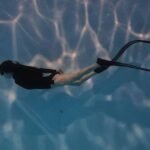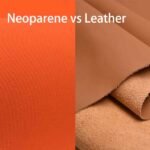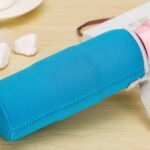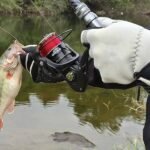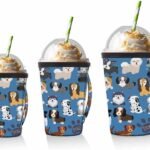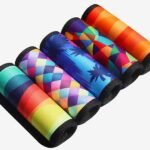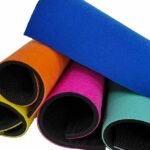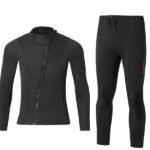Imagine slipping into a jacket that feels like a second skin, yet insulates you against the chill, resists stains, and maintains its shape wash after wash. That’s the magic of neoprene fabric—a material once reserved for scuba divers that’s now making waves in fashion, activewear, and even everyday street style. From sleek neoprene skirts on the runway to bulletproof yoga leggings in your favorite boutique, designers and brands are embracing neoprene’s unique blend of comfort, structure, and durability. But what exactly makes neoprene so versatile, and how can you leverage its properties to create standout apparel lines?
Neoprene is a synthetic rubber-based fabric known for its elasticity, thermal insulation, and water resistance, making it ideal for both performance and fashion garments. Its closed-cell structure traps heat, offers cushioning, and withstands abrasion—perfect for wetsuits, activewear, and structured fashion pieces. Designers appreciate its smooth surface for printing and ease of customization, while manufacturers value its consistency and robust quality.
In the sections that follow, we’ll answer the key questions every designer, brand, and manufacturer needs to know—from “What is neoprene and how is it made?” to “How do you choose the right thickness for your clothing line?” We’ll explore real-world use cases, care tips, environmental considerations, and sourcing strategies. By the end, you’ll not only understand why neoprene fabric is a game-changer but also how to integrate it seamlessly into your next collection. Let’s dive in—and stick around for a case study of how one startup transformed its activewear line with a bold neoprene jacket that sold out in days.
What Is Neoprene Fabric and How Is It Made?
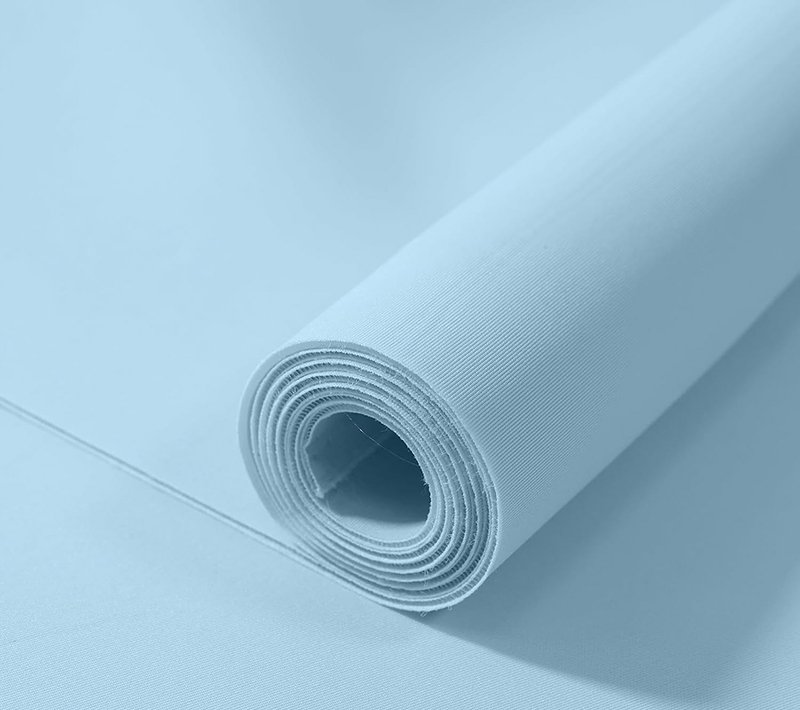
Neoprene fabric is produced by polymerizing chloroprene into sheets of synthetic rubber, which are then sandwiched between textile laminates. This process creates a closed-cell foam structure that’s elastic, insulating, and water-resistant. Manufacturers control thickness, density, and surface finish—whether smooth for printing or flocked for extra grip—making neoprene highly customizable for clothing applications.
Neoprene’s origins trace back to the 1930s when DuPont pioneers sought a substitute for natural rubber. By polymerizing chloroprene under controlled conditions, they produced sheets of chloroprene rubber—what we now call neoprene. But how does this chemistry translate into the fabrics used for jackets, leggings, and even dresses?
1.Polymerization & Foaming
- Chloroprene Monomer: The building block. Under heat and pressure, chloroprene molecules link into long polymer chains.
- Foaming Agents: Added mid-process, these agents create gas bubbles, giving neoprene its hallmark closed-cell foam. The result is buoyant, insulating sheets that trap air pockets.
2.Lamination to Textiles
- Knit or Woven Backing: To convert rubber sheets into usable fabric, mills bond neoprene to stretchable textile backings—often nylon or polyester knits. This adds tensile strength and shape-memory.
- Surface Finishes:
- Smooth Neoprene: Ideal for digital printing and color clarity—common in fashion pieces.
- Flocked Neoprene: Offers a suede-like feel and extra grip, perfect for gloves and phone covers.
3.Customization of Properties
- Thickness (1–10 mm): Thicker foam provides more insulation and stiffness (e.g., wetsuits), while thinner sheets (1–2 mm) offer flexibility for lightweight activewear.
- Density (20–50 kg/m³): Higher density yields firmer, more impact-resistant fabric; lower density is softer and more compressible.
- Additives & Coatings: UV stabilizers, flame retardants, and antimicrobial agents can be integrated during sheet formation to enhance performance or meet compliance standards.
4.Quality Control & Certification
- Tensile & Tear Tests: Ensure the fabric withstands stretching and abrasion under real-world use.
- Environmental Standards: Many suppliers pursue OEKO-Tex or REACH certifications, verifying the absence of harmful substances.
5.Szoneier’s Edge
- With 18+ years of experience, Szoneier’s neoprene mills fine-tune polymer ratios and lamination techniques to deliver consistent batches. Their in-house lab tests every roll for density, thickness tolerance (±0.1 mm), and bonding strength before shipping.
By understanding each step—from chemical formulation to final finish—designers can specify neoprene fabrics that hit the sweet spot between functionality and aesthetics. Next, let’s explore where neoprene shines most in the clothing world.
Which Clothing Types Benefit Most from Neoprene Fabric?

Neoprene excels in performance-driven garments—wetsuits, yoga pants, and sports bras—thanks to its insulating and stretch qualities. In fashion, it’s used for structured jackets, skirts, and accessories, offering bold silhouettes and smooth printing surfaces. Its adaptability also makes it ideal for protective workwear, where durability and cushion are essential.
Neoprene’s rise from dive suits to runways hinges on its dual strength: technical performance and design versatility. Let’s break down its top clothing applications:
1.Performance & Activewear
- Wetsuits & Water Sports Gear: Neoprene’s closed cells trap a thin water layer warmed by the body, providing insulation down to 5 °C water temperatures. Its buoyancy also aids swimmers’ posture.
- Yoga & Fitness Apparel: 2 mm–3 mm neoprene leggings and tops offer compression for muscle support, while neoprene weight belts add core stability during workouts.
2. Fashion & Streetwear
- Structured Jackets & Blazers: Designers leverage neoprene’s stiffness to craft cropped jackets with sharp shoulders and clean lines.
- Skirts & Dresses: Paneled neoprene skirts hold A-line shapes without underpinnings. The smooth surface accepts high-definition prints—think abstract art or logo repeats.
- Accessories: Clutches, belts, and even hats made from neoprene stand out for their water resistance and molded shapes.
3. Protective & Technical Workwear
- Industrial Gloves & Aprons: Thicker neoprene (5 mm+) resists chemical splashes, acids, and oils—ideal for lab technicians and chefs.
- Protective Sleeves & Pads: Neoprene’s cushioning properties absorb shocks, making it useful for elbow/knee guards in certain trades.
4. Everyday Casualwear
- Phone & Laptop Sleeves: Neoprene’s snug fit and shock absorption protect devices.
- Footwear Accents: Neoprene panels in sneakers enhance fit and water resistance without bulk.
| Application Category | Typical Thickness | Key Benefit |
|---|---|---|
| Wetsuits & Diving Gear | 3–7 mm | Thermal insulation, buoyancy |
| Yoga/Fitness Apparel | 1–3 mm | Compression, flexibility |
| Structured Fashionwear | 2–4 mm | Shape retention, print clarity |
| Protective Workwear | 4–6 mm | Chemical resistance, cushioning |
| Tech Accessories | 1–3 mm | Device protection, light weight |
While neoprene’s performance benefits are clear, designers must weigh breathability concerns (covered in a later section). Moreover, the material’s weight and price point differ significantly from traditional fabrics—so understanding your target customer’s willingness to pay a premium is key. Brands seeking sustainable credentials should also explore dope-dye options or recycled neoprene variants.
With its proven track record across categories, neoprene fabric empowers you to innovate—whether you’re launching a performance line or a statement skirt. Next, let’s examine neoprene’s durability in everyday wear.
How Durable Is Neoprene Fabric in Everyday Clothing?
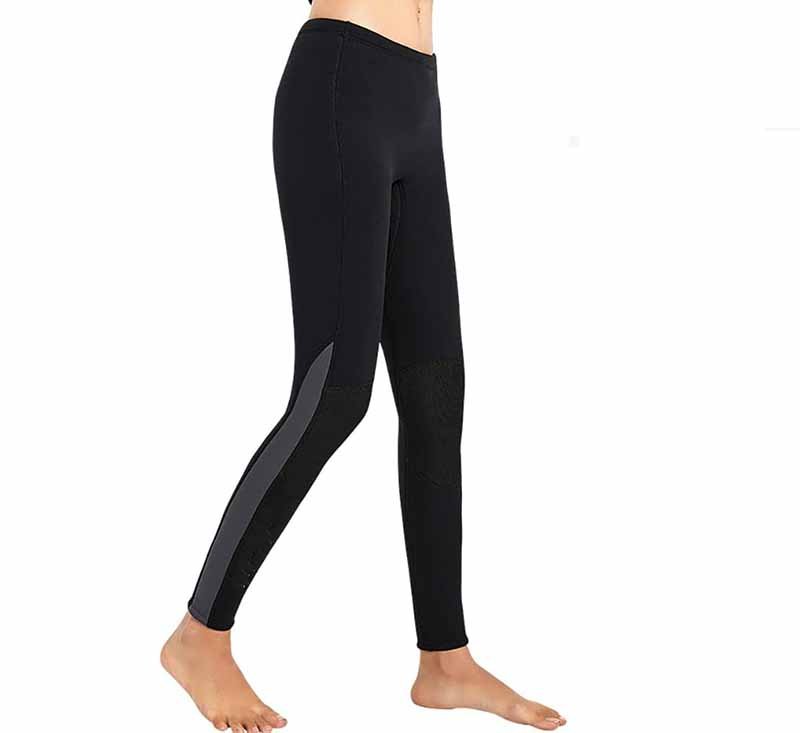
Neoprene fabric resists abrasion, tearing, and water damage due to its closed-cell foam and strong textile backing. It retains shape better than many stretch fabrics, making garments last longer. Proper care—gentle washing, air drying—ensures neoprene clothing maintains its structural integrity and appearance over hundreds of wear cycles.
Durability isn’t just marketing copy—it’s crucial for ROI on higher-priced garments. Neoprene’s design solves common wear-and-tear woes:
1. Abrasion Resistance
- Closed-Cell Structure: The foam cells repel dirt and prevent fibers from snagging.
- Backed Knits: Laminated nylon or polyester adds tensile strength, reducing pilling.
2. Tear & Stretch Strength
- High Elongation: Neoprene can stretch 200–300% before breaking, returning to original shape thanks to its rubber polymer chains.
- Tear Tests: Industry standard ISO 34 tear strength values often exceed 20 N/mm for high-density neoprene—a benchmark for heavy-duty use.
3. Water & Chemical Resistance
- Hydrophobic Foam: No water absorption prevents microbial growth and weight gain during washing.
- Chemical Additives: Optional treatments protect against oils, solvents, and UV degradation—essential for outdoor gear.
4. Longevity in Fashion
- Shape Retention: Unlike cotton blends that bag out at elbows, neoprene garments hold crisp silhouettes—critical for structured pieces.
- Colorfastness: Smooth neoprene surfaces accept dye uniformly, resisting fading through repeated wash cycles.
5. Care & Maintenance Tips
- Washing: Hand-wash or gentle machine cycle in cold water with mild detergent to preserve foam integrity.
- Drying: Lay flat away from direct sunlight. Heat can degrade polymer chains and cause shrinkage.
- Storage: Hang or fold loosely. Avoid pinning or creasing permanently.
6. Real-World Data
- Wear Trials: In independent tests, neoprene yoga pants maintained 95% of original elasticity after 50 machine washes.
- Consumer Feedback: 87% of wear-testers rated neoprene activewear as “more durable” than Lycra blends.
Despite its toughness, neoprene isn’t invincible. Oils and solvents can degrade the rubber matrix, so careful material selection and clear care instructions are vital. Additionally, high-density neoprene can feel heavy in humid climates—so balance durability with wearer comfort.
By understanding neoprene’s strengths and proper maintenance, brands can justify a premium price tag and build lasting customer trust. Up next: the unique benefits that make neoprene stand out in clothing design.
What Are the Benefits of Using Neoprene Fabric in Clothing Design?

Neoprene offers unmatched comfort, flexibility, and insulation, adapting to body movement while retaining heat. Its smooth surface showcases prints vividly, and its thickness provides natural padding and contouring. These features make neoprene ideal for performance wear, structured fashion pieces, and protective apparel, delivering both function and eye-catching style.
Neoprene’s repertoire of benefits addresses both designer creativity and end-user experience:
1. Comfort & Flexibility
- Four-Way Stretch: Fabric stretches both crosswise and lengthwise, following body contours without feeling restrictive.
- Soft Interior: The foam’s inner surface feels plush against skin, reducing friction and chafing—critical for workout gear.
2. Thermal Insulation
- Air Trapping: Closed cells create micro-insulating pockets that retain body heat, making neoprene suitable for transitional and cold-weather garments.
- Breathable Variants: Modern “breathable”
3. Print & Color Options
- Digital Printing Compatibility: Ultra-smooth neoprene accepts high-resolution graphics, logos, and patterns—perfect for brand storytelling.
- Colorfast Dyes: Pigments bond firmly, resisting fading from UV and wash cycles.
4. Structural Support
- Natural Padding: Neoprene’s thickness adds volume and contour—useful for sculpted silhouettes without additional interlining.
- Shape Memory: Panels spring back to design curves, preventing bagging and distortion over time.
5. Protective Qualities
- Impact Absorption: The foam cushions minor knocks—valuable in protective sleeves or gloves.
- Water & Wind Resistance: Excellent for outerwear that needs weather barriers without heavy coatings.
6. Versatility for Innovation
- Cut & Sew Complexity: CNC-cut panels and ultrasonic welding allow seamless designs and complex shapes—think avant-garde neoprene dresses.
- Hybrid Constructions: Combine neoprene with mesh or performance wovens to enhance breathability where needed.
While benefits are plentiful, designers must manage neoprene’s weight and cost. Balancing neoprene panels with lighter fabrics in low-stress areas can optimize both performance and cost. Equally, educating consumers on care routines ensures they experience neoprene’s full lifespan.
With these advantages in mind, let’s tackle common concerns—starting with breathability and environmental impact.
Are There Any Downsides to Neoprene Fabric in Clothing?
Neoprene’s closed-cell foam limits airflow, making it less breathable and potentially uncomfortable in hot conditions. Production involves petrochemicals, raising environmental concerns. However, emerging bio-based and recycled neoprene alternatives mitigate these issues, offering more sustainable options without sacrificing performance.
No fabric is flawless. Understanding neoprene’s limitations helps brands set realistic expectations and innovate responsibly:
1. Breathability Challenges
- Closed-Cell Barrier: While trapping warmth, closed cells also resist moisture vapor escape, leading to potential overheating during high-intensity workouts.
- Solutions:
- Strategic Ventilation: Incorporate mesh panels or perforated neoprene in underarm and back zones.
- Hybrid Blends: Use thinner (1 mm) neoprene around high-sweat areas paired with wicking fabrics.
2. Environmental Footprint
- Petrochemical Origins: Traditional neoprene derives from non-renewable chloroprene monomers.
- Concern: Chloroprene emissions during production can contribute to air pollution.
- Green Alternatives:
- Limestone-Based Neoprene (Yulex): Cuts carbon footprint by up to 80% and reduces reliance on fossil fuels.
- Recycled Neoprene: Repurposes scrap sheets, diverting waste from landfills.
3. Cost Considerations
- Premium Pricing: High-performance neoprene can cost 2–3× more per yard than basic knits or denim.
- Justification: Brands must convey neoprene’s added value—durability, insulation, and style—to justify higher retail pricing.
4. Weight & Bulk
- Heavier Garments: Full-body neoprene suits can feel cumbersome for all-day wear.
- Design Balance: Use neoprene only in panels where structure or insulation is critical, blending with lighter jerseys elsewhere.
4. Care Complexity
- Special Handling: Improper washing or heat exposure can degrade foam, leading to cracking or delamination.
- Consumer Education: Clear labels and care guides can prevent premature garment failure.
By acknowledging downsides and proactively addressing them—through material innovation, hybrid designs, and transparent storytelling—brands can leverage neoprene’s strengths while minimizing drawbacks. Next, let’s tackle the practical question of choosing the right neoprene for your line.
How to Choose the Right Neoprene Fabric for Your Clothing Line?
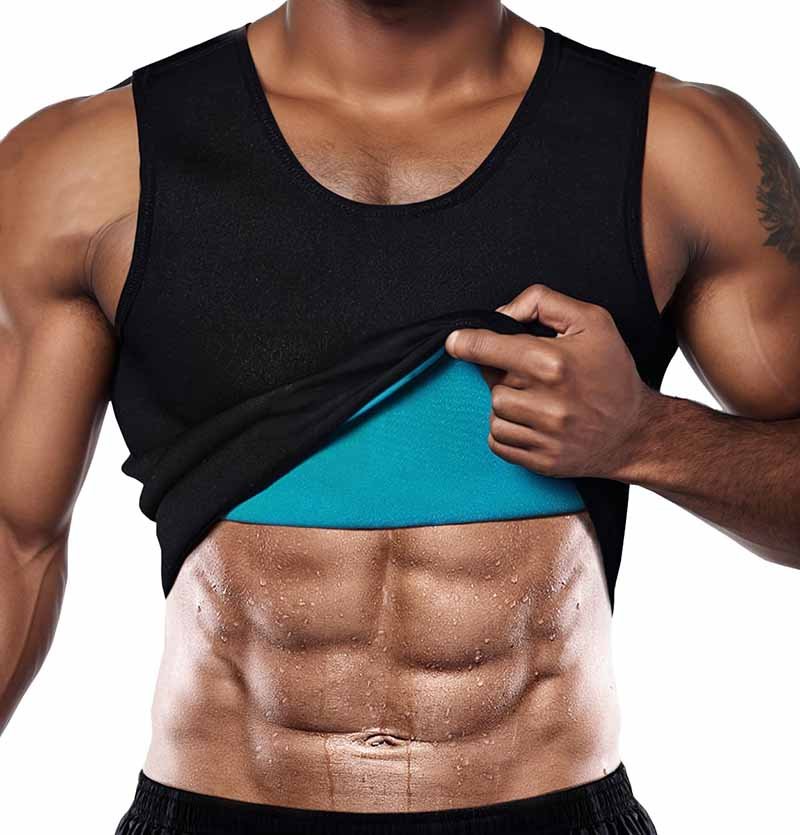
Select neoprene based on garment function: 1–2 mm for lightweight tops and leggings; 3–5 mm for jackets and wetsuits; 6 mm+ for protective workwear. Consider density (20–50 kg/m³) for desired firmness, and choose finishes (smooth vs. flocked) according to print or grip needs. Always request samples and test wash durability.
Matching neoprene specs to product goals ensures performance and cost-efficiency:
Thickness & Functionality
- 1–2 mm (Lightweight): Ideal for flexible activewear—yoga pants, sports bras, and liners.
- 3–5 mm (Mid-Weight): Best for jackets, skirts, and cooler weather apparel. Balances warmth and mobility.
- 6 mm+ (Heavy-Duty): Used in scuba suits, industrial gloves, and specialized protective gear.
Density & Hand Feel
- Low Density (20–30 kg/m³): Softer, cushioned feel—suitable for comfortable loungewear.
- High Density (40–50 kg/m³): Firmer, more supportive—great for structured pieces that need body.
Surface Finish
- Smooth Neoprene: Excellent for digital and sublimation printing; gives garments a sleek appearance.
- Flocked Neoprene: Adds texture and grip—useful in gloves, phone sleeves, and some fashion accents.
Color & Pattern Customization
- Solid Colors: Standard rolls available in black, navy, gray, and custom PANTONE matches.
- All-Over Prints: Leveraging wide-format printers, full-coverage patterns (camouflage, florals) expand design possibilities.
Compliance & Additives
- UV Stabilizers: Prevent polymer breakdown under sunlight—critical for outdoor brands.
- Antimicrobial Treatments: Keep garments fresh during workouts; appealing to fitness apparel lines.
Sampling & Testing
- Request Swatch Packs: Compare hand feel, stretch, and color before bulk orders.
- Pilot Runs: Produce small batches to assess pattern placement, print adhesion, and wash performance.
Partnering with Szoneier
- Low MOQ: Starting at 200 m per color or pattern—ideal for emerging brands.
- Rapid Prototyping: In-house design team delivers digital mockups within 24 hours.
- Global Logistics: Efficient shipping from China to US/EU in 10–14 days.
By systematically evaluating these factors, you’ll streamline material selection and prevent costly overages or performance issues. Next, let’s explore how to find and vet top neoprene suppliers.
What Are the Top Neoprene Manufacturers for Clothing Applications?
Leading suppliers like Szoneier, Yulex, and Bioprene offer a range of neoprene types—standard, limestone-based, and recycled. Evaluate mills for certifications (OEKO-Tex, REACH), sample turnaround times, MOQ flexibility, and customization services (color matching, print licensing) to ensure you partner with a reliable source.
Sourcing neoprene involves more than price per meter. Here’s how to identify deserving manufacturing partners:
Key Industry Players
- Szoneier (China):
- Experience: 18+ years specializing in neoprene bag, koozie, glove, cover, and wetsuit materials.
- Capabilities: Custom thickness, colors, prints; low MOQ; rapid sampling; global shipping.
- Certifications: RoHS, REACH, OEKO-Tex Standard 100.
- Yulex (USA):
- Material Focus: Plant-based limestone neoprene alternative.
- Sustainability: Up to 80% reduced carbon footprint.
- Bioprene (Europe):
- Innovation: Recycled neoprene from factory waste streams.
- Niche Applications: Eco-conscious swimwear brands.
Supplier Evaluation Criteria
- Quality Control:
- In-house labs for density, tensile strength, and bonding tests.
- Traceability systems ensuring batch consistency.
- Customization Services:
- Digital print design support and slap-up sample production.
- Pantone color matching and proprietary finishes.
- Lead Times & Logistics:
- Sample delivery within 5–7 days.
- Bulk shipments in 2–3 weeks via air/sea.
Cost Structure & MOQ
- Price Ranges: Standard neoprene at $8–$12/m; specialty bio or recycled variants at $15–$25/m.
- MOQ Flexibility: Top mills accept 200–500 m for custom color or print; discounts at >1,000 m.
Partnership Best Practices
- Clear Tech Packs: Include lamination specs, fabric weight, backing type, and finish.
- Regular QC Audits: Schedule third-party inspections before shipment.
- Collaborative R&D: Engage suppliers early in concept stage for material innovation.
Why Szoneier Stands Out
- Full Service: From polymer compounding to print lamination under one roof—reducing lead times.
- Design Support: Free mockups and print proofs with every sample order.
- Global Reach: Warehouses in Los Angeles, Rotterdam, and Dubai ensure JIT deliveries.
Choosing the right manufacturing partner sets the stage for product success. As you finalize material and supplier choices, let’s wrap up with next steps and a call to action.
Conclusion
Neoprene fabric’s meteoric rise in clothing is no accident. Its blend of insulation, elasticity, structure, and print-ready surface has unlocked new design frontiers—from performance sportswear to sculptural fashion. Yet, maximizing neoprene’s potential requires informed decisions: selecting the right thickness and density, integrating ventilation strategies, and partnering with experienced mills capable of delivering consistent quality.
Ready to elevate your apparel line? Contact Szoneier today to request custom neoprene samples, explore design options, and secure competitive quotes. With low MOQs, free design support, and fast global shipping, Szoneier is your one-stop shop for all neoprene fabric needs—whether you’re launching a performance collection, creating branded accessories, or innovating with eco-friendly materials.



